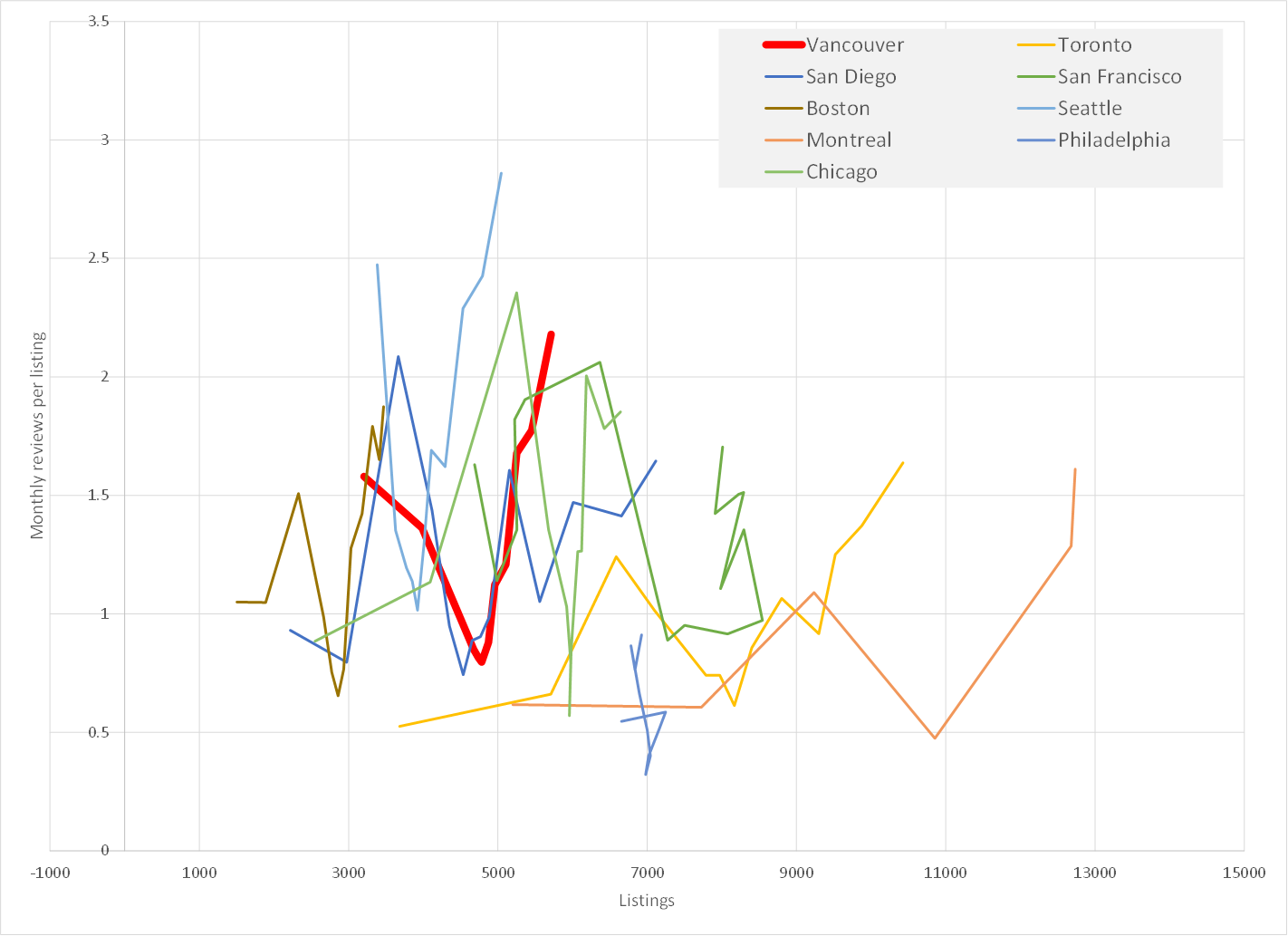I’ve been doing the Airbnb data collection thing for about four years now, off and on, with my first post being on October 19, 2013.
It’s been interesting, rewarding, and useful for quite a few people, and I think it has helped to push the debate on Airbnb forward in some cases. But there is a time for every season and I think this effort has done what it can, and it’s time to move on. I’ll continue until the end of the year, and I’ll complete any commitments I have made to individuals and groups, but as of the end of the year I will stop running regular data collections.
A few notes / reasons:
- I’ve already fallen behind on responding to requests, and I won’t be taking more.
- My code is on github (https://github.com/tomslee/airbnb-data-collection) for anyone who wants to continue and the bulk of the data I have collected will remain at http://tomslee.net/airbnb-data-collection-get-the-data. It could be much better, but it’s there.
- Others are doing a better job of making public data accessible (including the excellent Murray Cox at Inside Airbnb obviously).
- People doing serious research tend to roll their own (it’s not rocket science) or go to commercial outfits like AirDNA who collect more detail.
- Cities looking for a partner in managing short-term rentals may consider groups like Host Compliance https://hostcompliance.com.
Thanks for the feedback and contributions, and all the fascinating conversations I’ve had through this project. Onwards and upwards…





